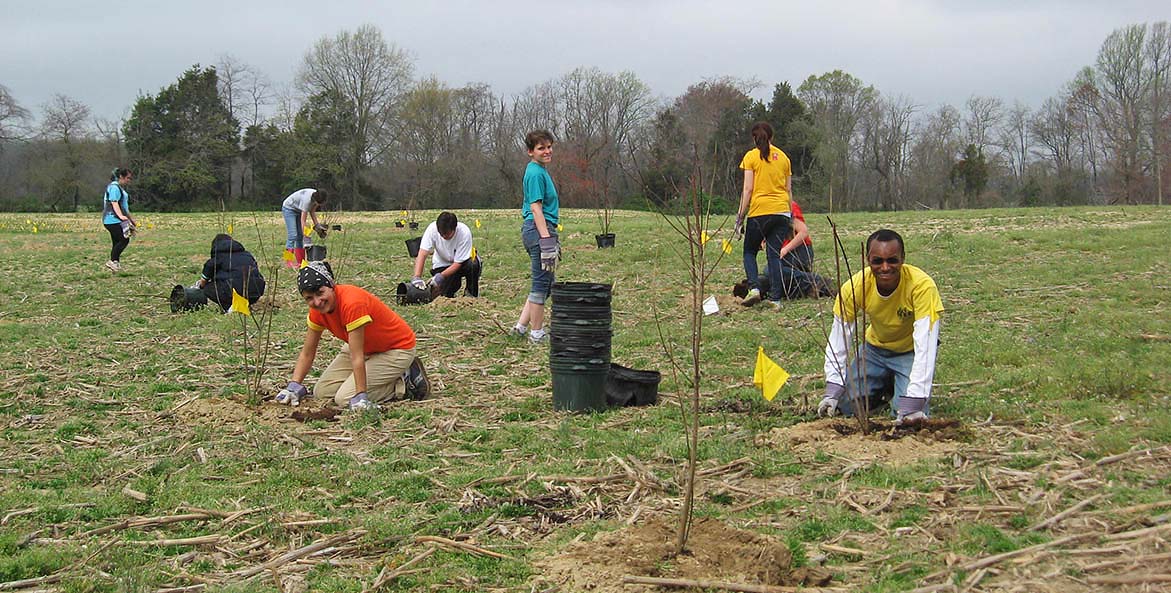The following opinion by Robin J. Clark was first published in The Chestertown Spy.
The National Climate Assessment has a map that shows which coastlines in the United States are vulnerable to climate change. On it, the entire Maryland Eastern Shore is colored red—indicating shoreline erosion and sea level rise are "virtually certain" and there is "high vulnerability" to the Shore's population.
The Shore shares this unfortunate distinction with low-lying areas of Florida, Louisiana, and the Carolinas.
The Eastern Shore and Bay Islands such as Tangier and Smith are dealing with a two-headed monster. Shorelines are eroding while sea levels are rising due to climate change. The changes are happening rapidly, and Maryland is searching for solutions.
Fortunately, help is on the way. Earlier this year, the Maryland General Assembly passed a bill that could be among the best ways to deal with the effects. The new law calls on the state to plant 5 million new trees in Maryland during the next decade.
Many of these trees will likely be planted on the Eastern Shore. The target of 5 million is based on the potential for up to 4.5 million of the trees to be planted on agricultural and rural lands. As one of the state's agricultural hubs, the Shore is well positioned to receive hundreds of thousands of trees from this category. The other 500,000 trees are designated for urban areas and the law's definition enables communities such as Salisbury, Easton, and Cambridge to qualify for urban tree plantings and maintenance funds.
Trees are among the best defenses against climate change. They soak up carbon dioxide from the air—the primary greenhouse gas fueling climate change—and use it to grow. Their roots prevent soil erosion in the same way rebar reinforces concrete. This is especially important along shorelines where tree buffers strengthen stream and riverbanks. Tree branches provide shade that can cool city blocks as well as waterways, helping to reduce harm to fish and people alike from temperatures that are on the rise each year.
Trees have numerous water quality benefits as well. They soak up and store nitrogen and phosphorus—the two primary Bay pollutants that fuel harmful algal blooms. Trees also remove other contaminants from water, prevent flooding, provide habitat to animals, and purify the air. The U.S. Forest Service found one hundred mature trees can retain about 139,000 gallons of rainwater per year and remove about 53 tons of carbon dioxide as well as 430 pounds of other pollutants.
For the state's tree planting program to truly be successful, however, government leaders and residents must help find and offer land to plant new trees. There's time for that as plantings aren't set to begin until 2023.
The Chesapeake Bay Trust, Maryland Department of Natural Resources, and Maryland Department of Agriculture will be responsible for tree planting programs. Cities, counties, schools, nonprofit organizations, farmers, civic and faith-based groups, and private property owners are among those who can qualify for tree plantings.
Maryland farmers and property owners concerned about the costs associated with transitioning land to tree cover should know that the tree planting program will pay for many of the costs and that there will be long-term benefits. In cities, trees reduce stormwater runoff, on farmland they help create healthier soil, in neighborhoods they attract wildlife and increase property values.
There have been some elected leaders who have already criticized the new program for funding it with a one-time investment from the Bay Restoration Fund, which is primarily used to upgrade wastewater treatment plants in the state. They've suggested the reallocation will prevent needed wastewater facility upgrades from happening. However, as Maryland Department of the Environment's spokesman Jay Apperson recently noted, the tree planting program won't impact wastewater plant upgrades as the upgrades continue to receive the highest priority for funding in state law.
Climate change is a pressing threat to Maryland's Eastern Shore. While warming temperatures, rising seas and more frequent and severe storms cannot be stopped, tree plantings are a cost-effective way to help insulate communities against climate change and mitigate its more devastating effects. The new trees coming to the Shore won't just be nice-to-have, they'll be necessary.
—Robin J. Clark, CBF's Maryland Staff Attorney



